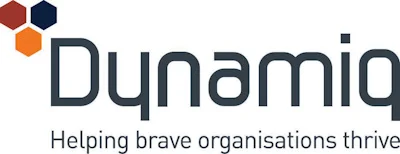
An effective business resilience program is critical for reducing operational disruption at mines; however, measuring and proving the return on investment (ROI) is often complex.
The billable hour, human capital consulting model for the resilience advisory market has left providers unable to demonstrate a clear ROI for their clients. Operational data is typically undervalued and not used to inform better decision-making. Usually, there is a failure to either share important data or even collect it in the first place.
While a digital resilience platform offers significant value to a business, it is difficult to measure performance and demonstrate the actual return on investment without this detailed supporting data.
But the upfront costs in a digital resilience program can put operators off making the investment in the first place. However, there is a serious risk of higher costs in the long term caused by attempts to save costs by not investing in a resilience program in the short term.
“It’s much easier to quantify once you have the data because the formula goes back to: how much would this event normally cost us? Which is information that you can get from the market. Let’s say, for a mining business with a revenue of a billion dollars a year, a severe weather event might cost them $10m every time – just in operational and infrastructure disruption,” explains Kel Donovan, business resilience expert from Dynamiq.
“Now, when you compare that to the amount of money that they could invest in a resilience program, which is usually around $100,000 for an equivalent business, then the investment stands up every day.
“But that’s a very difficult equation to put on the table unless you’ve got the data to show how many events of what nature and scale that you’re having to manage each year. A technology solution like ours allows us to collate that information.”
Digital resilience program advantages
Dynamiq’s EMQnet offers a digital resilience program that collects a comprehensive set of operations data. The centralised platform is easily accessible by stakeholders and staff regardless of location.
EMQnet allows more parties to keep track of events in real-time, providing a clear understanding of the potential consequences of a disruptive event. The tech allows operators to build a database to enable an effective response. Data is required to determine benchmarks both internally and externally against other information from across the industry.
This is in direct contrast with a traditional resilience program that commonly uses manual processes, which have a much more limited scope, involves fewer people, and restrict the availability of data.
Traditional resilience programs are not centralised or measured. They are often hosted by separate business systems, where the information can become diluted and hidden away. In addition, there is typically no standardisation on how that information is correlated or stored.
In comparison, a digital resilience platform such as Dynamiq’s allows the standardisation of data, which informs decisions on responding to an event. Ultimately, the speed and efficacy of the response proves how effective an investment is. Data can also be used to identify where operations improvements are needed, for example, if more staff require training or communications need improvements. All of this adds significant value to a business and is easily measured.
“It’s having the right people in the right place, making the right decisions as quickly as possible to mitigate the impact of an event. And that’s rarely measured. So, that $10m example event with the necessary preparedness efforts and a quick response could significantly reduce the impact by millions of dollars by restoring operations faster,” says Jarrod Wilson, CEO of Dynamiq.
Supporting data is essential to highlight the effects of natural risks, insurance implications, and any environmental costs.
“When you boil it down, it’s collecting and analysing data to demonstrate return on investment and make better investment decisions,” adds Donovan.
Measuring value
One way of changing the perception of resilience is to measure the value of a program rather than the investment itself. Measuring risk under management and response efficacy are vital to understanding the overall value that a program is delivering.
An inadequate resilience program means a business is unprepared for disruption. Should a disruptive event occur, then this lack of preparedness will almost certainly lead to a failure on a much larger scale. Operations will be disrupted, and resources may be unavailable when they’re needed the most. As a result, operational downtime could last for extended periods and costs will continue to soar.
For example, major flooding events are common in Australia and have increased in frequency and severity in recent years. Flooding can cause significant disruption for both mining operations and local infrastructure. During one such event in the northern part of Australia, a significant part of the state was affected.
Dynamiq was dealing with many clients involved. And the team noticed a stark contrast between businesses that were prepared and those that were not.
“What we saw really clearly was that the clients that that sat and waited for the water to go down before they got together to work out what to do, they just got left behind,” explains Donovan.
“Whereas the people that got together while the water was still coming up and worked out their plans, they booked all the resources first. This meant that the people that waited for the water to recede had lost the opportunity to secure basic materials when they tried to book resources.
“When you consider the multiplier effect, they’re no longer waiting days or a week. They’re now waiting months before they can even start to execute a recovery plan.”
Many mining businesses still view this kind of disruption and downtime as an issue that insurance will solve, measuring the costs only in the aftermath of a severe event. However, as Wilson explains, this is a mistake.
“It’s nothing to do with insurance at all, and particularly with mining companies who have really extensive insurance programs, and they have significant self-retention exposures. So, every dollar beneath the self-retention excess they wear, matters,” says Wilson.
Linking resilience to business strategy
Regarding operational resilience, the business resilience program objectives are tactical and delivered to a narrow scope. Objectives do not always link to a strategic outcome.
Business leaders commonly fail to understand the value of resilience. They regularly make short term procurement decisions without understanding the need for capability development. In addition, board audit and risk committees need ROI measurements to support their role in guiding business direction. Yet all too often, they fail to ask for evidence.
By linking resilience to business strategy and objectives, leaders can understand the role resilience plays in communicating to internal and external stakeholders that the business can achieve its objectives regardless of the operating conditions.
“Almost all business resilience program owners think that measuring return on investment in this area is impossible. They just put it in the ‘too hard basket’ because they haven’t seen it done before. When in fact, it’s infinitely possible, and the leaders of most high-risk industries have been doing it for some time,” adds Donovan.
“The simplest approach is to record the cost of each event you manage over a year, then compare that to the publicly available average cost of events to similar-sized businesses. You can then estimate your annual savings. Given the infrequent nature of these significant events, it’s best to base your investment decisions on a longer timeframe like five years. “Dynamiq’s technology makes capturing data effortless, and over time provides great insights into the performance of the program.”


